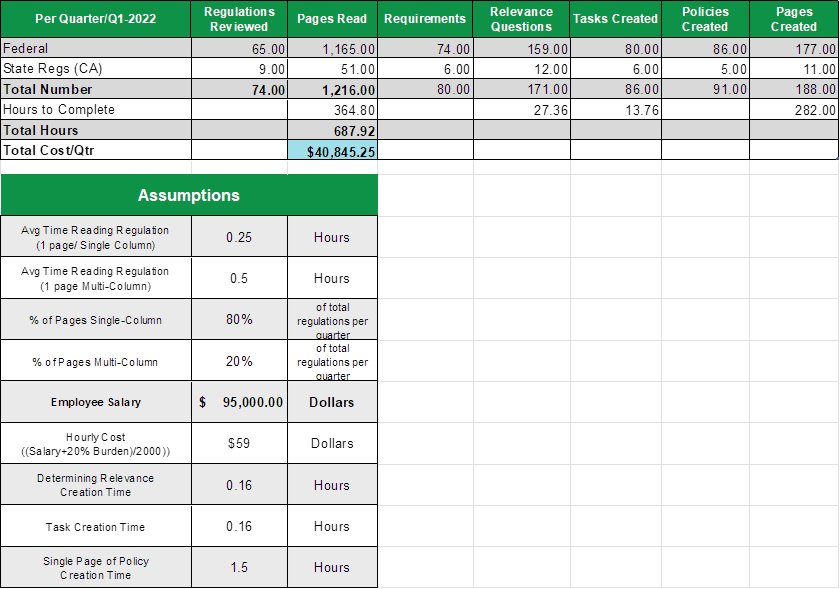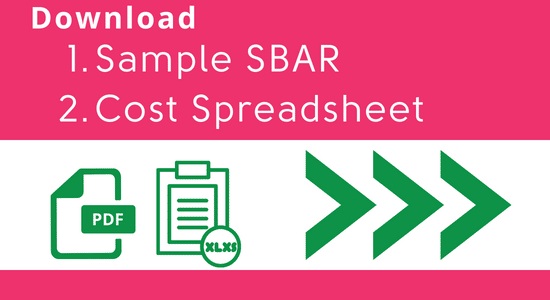
How to use the SBAR Framework
The same tool nurses use to communicate about health emergencies – can help you secure investment in your compliance department.
Healthcare compliance professionals who want to make a case for investing in a healthcare regulatory change management solution like YouCompli are using the SBAR framework:
- Concisely explain the situation
- Give pertinent background details
- Explain your assessment
- Make a recommendation
When you’re competing for resources along with every other department in the organization, it’s critical to make a clear, concise and compelling case for investment in your work. That way people understand what you need and what value it adds to the organization.
The SBAR framework helps the provider understand what is happening and what the team needs them to do. The framework was developed by Michael Leonard, MD, Physician Leader for Patient Safety, along with colleagues Doug Bonacum and Suzanne Graham at Kaiser Permanente of Colorado. While its primary use is in clinical cases, healthcare professionals across the organization are finding it useful for communicating with clinical leaders.
Over the past few years, I’ve helped many of our clients demonstrate the value of investing in compliance with an SBAR. Maybe our application of the framework could help you. Here’s a brief summary of our approach:
1. Situation
Due to the nature and number of regulatory changes in healthcare, managing regulatory changes creates significant operational, financial, and reputational risks.
Name your regulators
Our system is regulated at the federal and state levels. Additionally, we are subject to regulatory guidance from our Medicare Administrative Contractor.
Briefly describe your manual process
This creates a scenario where regulations are changing almost continuously. These changes flow into our organization in a completely unstructured manner.
2. Background
Our organization is subject to regulation from more than ___ number of regulators.
One of them, the U.S. Department of Health and Human Services (HHS) Office of the Inspector General (OIG), has mandated that all Providers must establish seven (7) elements of an effective compliance program.
Currently, we do not have the ability to:
- Name any of the seven elements your current compliance function is challenged to address.
Not having a scalable, repeatable regulatory change management process puts us at risk of being unable to correctly perform all but __ number of the required elements. We can have a designated compliance officer and have open lines of communication.
3. Assessment
To effectively assess the issue, we need to review two different but equally important concepts.
- What is the cost associated with doing this work (properly) today?
- What are the risks/costs associated with not doing this work effectively today?
The cost associated with doing this work (properly) today
List the steps to complete this work today.
Insert a worksheet of costs by a specified period, for example, quarterly. In this example we provided the number of regulatory changes the system dealt with in Q1 of 2022.

Based on this assessment, the quarterly cost of completing the work is _$40,847.25_
The risks and costs associated with not completing this work are more subjective. They fall into three different types.
- Fines
Provide examples of fines that are similar to your organization’s size and scope
- Corporate Integrity Agreements
CIAs create significant costs and distractions for all parties of the organization involved.
For example:
Reporting requirements increase significantly
Required to hire an Independent Review Organization (IRO)
- Reputational
A good reputation is hard to build and easy to lose. For hospitals, the way the reputation is perceived by its stakeholders is important because the subject of the service is human health.
Within the populations we serve adherence to existing regulatory requirements is a forgone conclusion, we are expected to act with a consciousness of social responsibility.
Based on the factors above it is my conclusion that our organization must focus on creating a more effective, more efficient means for managing compliance with regulatory changes.
4. Recommendation
To address this issue, we need to complete the following:
Bullet out your recommendations for consulting, employees, and / or software
Some examples:
- Institute a standardized regulatory compliance process
- Gain visibility into enterprise-wide regulatory compliance
- Ensure that activities being undertaken to comply are what the law requires (accuracy)
- Track compliance activities with regulations at the departmental level
- Create the ability to demonstrate what we have done
Include competitive research for solving your challenges a couple of ways
Some examples
- To avoid the need for additional FTEs an evaluation of existing technical solutions was undertaken
- We engaged resources from various parts of our organization to undertake this assessment
- There are three major vendors providing solutions in this area
- Below is a competitive matrix of each companies offering
Present a solution that is more competitive than the current risks combined with the current costs.
For example
Based on our analysis we recommend selecting _______ as our vendor of choice for this project. The major reasons for this choice are:
Here are some of supporting bullets our clients use
- YouCompli does the work for us. Their Expert Compliance Professionals read, analyze, and translate new regulations into business requirements. This operationalizes the regulation for us.
- We can rely on what they send us. Before sending us the requirements, they are all reviewed by a law firm with an excellent reputation in healthcare regulation. (Horty Springer & Mattern).
- The system is easy to use and learn.
The Situation – Background-Assessment-Recommendation approach can help you clearly and precisely make the case for new investment in the compliance function.
Creating your own SBAR
The SBAR framework can help you position and sell solutions to your regulatory change management challenge and many other challenges. Our clients find that our one-two punch of regulatory analysis and a workflow tool that manages the implementation of regulatory changes helps them reduce risk in their organization, feel more confident, and partner more effectively with clinical and operational leaders. The SBAR framework can help you make the case for a tool like YouCompli.

We would love to help you learn more about how to adapt this tool to your department’s needs. We’re offering an SBAR workshop in early 2023. Please sign up for our updates to be notified when registration opens.
